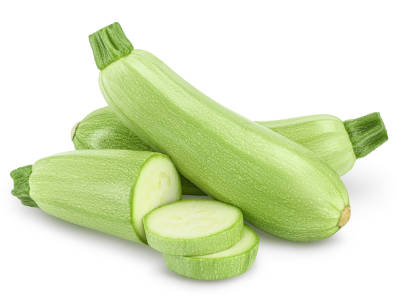Fruit Vegetables Category

spaghetti squash
After it's cooked, you can dig a fork into the flesh of a spaghetti squash and pull out long yellow strands that resemble spaghetti. Though they taste like squash, the "noodles" can serve as a low-calorie substitute for pasta.
Learn moresummer squash
Unlike winter squash, summer squash can be eaten rind, seeds, and all. The different varieties vary in size, shape, and color, but they can be used interchangeably in recipes. Select summer squash that are small and firm.
Learn moresweet dumpling squash
Sweet dumpling squash are fairly small, so you can cut them in half, bake them, and serve each half as an individual portion. The flesh is sweeter and drier than that of other winter squash, and the peel is soft enough to be eaten.
Learn moretepin dried
These look a bit like large dried cranberries. They're also sold fresh. They are very hot.
Learn moreThai eggplant
These golf-ball sized eggplants are more bitter than American eggplants. They come in different colors, but they're usually green with yellow or white striations. They're often used in hot chile or curry dishes. Remove the bitter seeds before using.
Learn moreturban squash
This squash has a gorgeous rind, but ho-hum flavor. It makes a good centerpiece, or you can hollow it out and use it as a spectacular soup tureen.
Learn moreTurkish green pepper
These are long, green, and hot chili peppers. Turks like to grill them and serve them with meat. Don't confuse this fresh pepper with the spice called Turkish pepper.
Learn moreurfa biber
This is a dried ground chili pepper used in Turkey on meat dishes. It is medium spicy and has a smoky flavor.
Learn morevine tomato
For best flavor, tomatoes should stay on the vine until they're fully ripened. This is a tall order for growers, who prefer to pick tomatoes while they're still green and sturdy, and then gas them with ethylene until they turn red. Vine tomatoes, on the other hand, are picked after they begin to "break" or turn red, which allows them to develop fuller flavor. Expect to pay more for the special handling required to bring these to market.
Learn morewhite eggplant
This eggplant comes in different shapes and sizes and, except for the exterior color, is interchangeable with their purple cousins, the American eggplant and the Italian eggplant.
Learn morewinter melon
This Asian squash-like fruit has a mild flavor similar to a cucumber. It should be peeled, seeded, and cooked before eating. Don't confuse it with sweet melons like Honeydews or cantaloupes, which sometimes also go by the name "winter melons."
Learn morewinter squash
Winter squash come in many sizes and shapes, but all have hard outer rinds that surround sweet, often orange flesh. Winter squash arrive late in the growing season and they have a long shelf life, so they've long been a staple in winter and spring, when other vegetables are harder to come by. Unlike summer squash, winter squash must be cooked. They're usually baked or steamed, and then sometimes puréed. Select squash that are heavy for their size.
Learn moreyellow squash
This category includes yellow straight-neck squash and yellow crookneck squash. They're interchangeable with zucchini.
Learn moreyellow wax pepper
These are easily confused with milder banana peppers. Sample before using. They are moderately hot.
Learn morezucchini
America's most popular summer squash, zucchini can be served raw, sautéed, baked, grilled, and even shredded and baked in a cake. Green zucchini is the most popular, but some grocers also carry a bright yellow variety. There's also a globe-shaped round zucchini that's easy to stuff.
Learn more





















































































































































































































































































































































